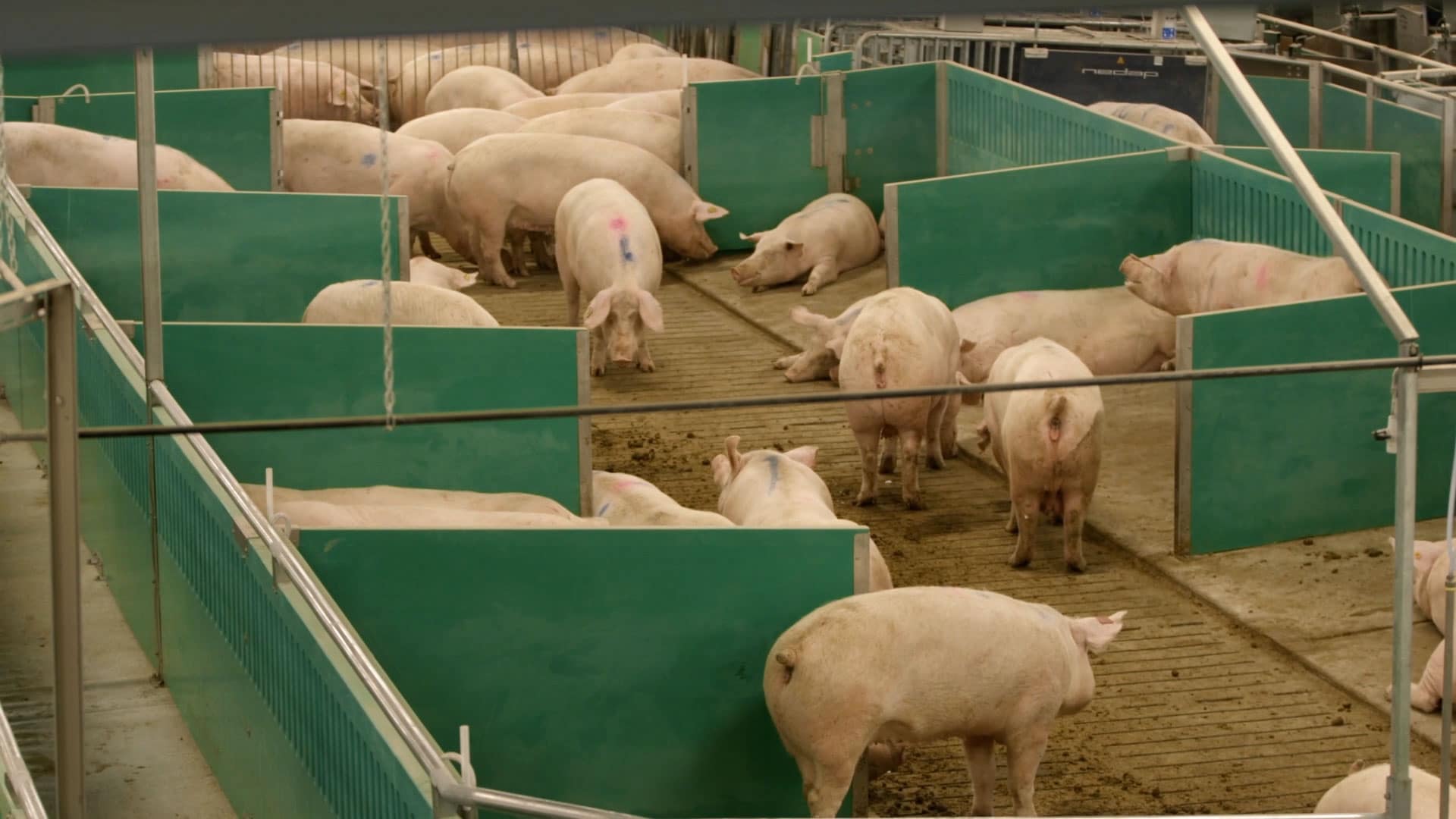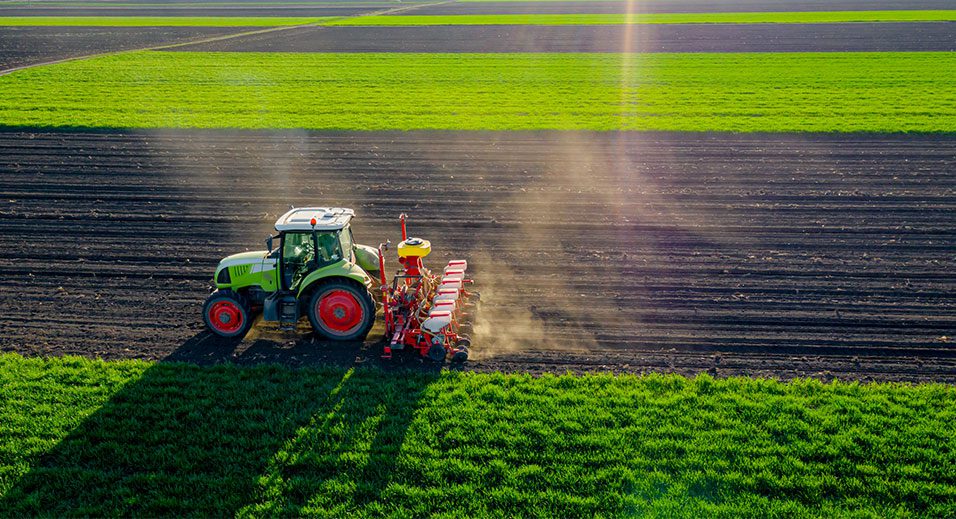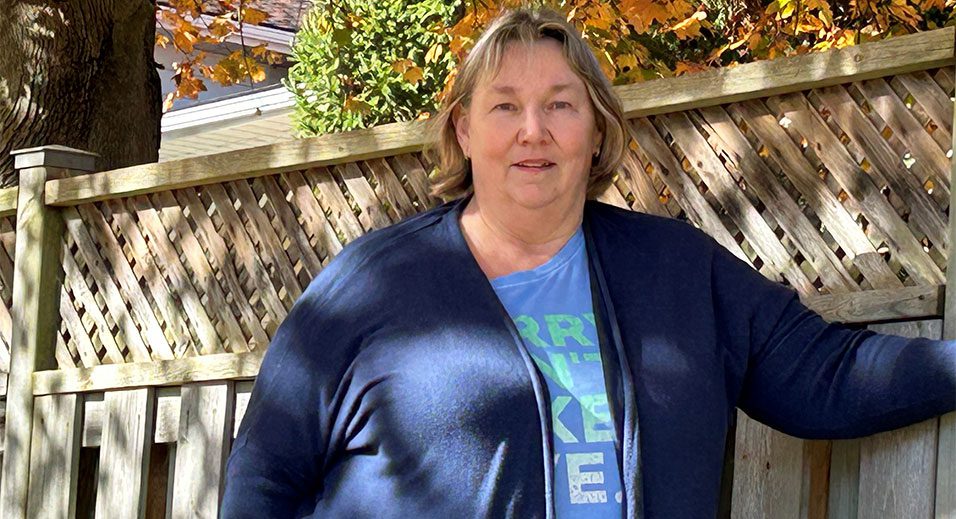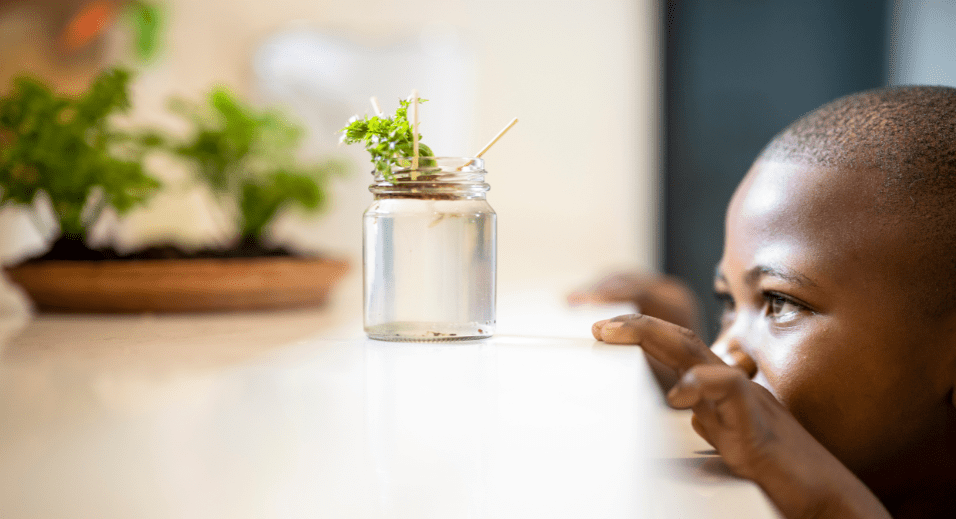By Jonathan Sawatzky, Vice President, Maple Leaf Agri-Farms
Profound changes sometimes start with an idea that at first seems impossible. I’m certain that when we announced our intent to convert all of our sow housing in Maple Leaf Foods-owned barns to open housing and eliminate the use of gestation crates, a lot of people wondered if we’d succeed or worse – if we’d regret our decision.
The reality is that as we complete our housing conversion, I’m more convinced than ever that it was the correct decision for our pigs and remarkably, for our people too.
Our Open Sow Housing System Design
When we committed to plan to redesign our barns, we did so after extensive research. We toured operations in Europe and we studied the approaches they used. We didn’t see a system that was ideal for our operations, so we assembled the best ideas we saw into our own unique system that we call Advanced Open Sow Housing.
Our system does more than simply house sows in groups. It is designed to enable pigs to choose when to eat when they are hungry, when to play when they feel social and when to sleep when they are tired.
Using Our Animal Care Skills Every Day
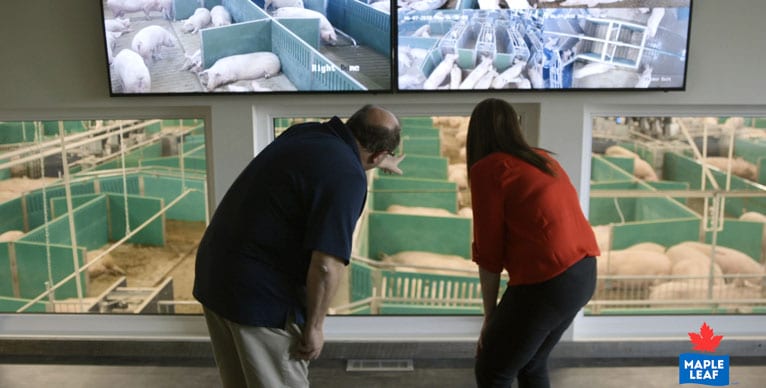
One of the unexpected gifts this system offers is the opportunity for our people to fully practice their animal care skills. It’s interesting to consider the “conventional wisdom” about gestation crates, which says that housing sows in this way is easier. We’ve found quite the opposite.
As a result of the housing design we created, our animal care technicians can now observe sows as they move, play, eat and interact. They can identify problems more readily by seeing sows moving freely and by watching behaviours in action. They come to know which sow is shy, which is playful, which likes to be in charge and which is mischievous, like one sow at our Green Valley Barn who nips the back of people’s boots when they arrive to call attention to her. Her behaviour seems to say, “I’m here! Scratch my ears,” which they happily do. Our teams also learn to recognize the behaviour changes that signal potential problems so they can be proactive in delivering care.
How We Measure Success
So how do we measure the success of the conversion? We see it in the health of our pigs. We see it in their ability to deliver healthy piglets. And we see it in the higher level of job satisfaction among our people.
It can also be measured in what we DON’T see. Sows confined to gestation creates often display repetitive, stereotypic behaviours like head-banging and bar-biting as a way of coping with the stress that living in a confined space can cause. These behaviours simply don’t occur in our open housing.
Our Maple Leaf Agri-Farms barns supply 40 per cent of the pigs that Maple Leaf Foods need to create its pork products. The balance of the pigs we need come from independent producers who are in the process of converting – and the commitment required cannot be overstated. We hope that our experience with conversion will inspire other producers and show, not just that it’s possible, but that it’s better in countless ways for pigs and for the people who raise them.
